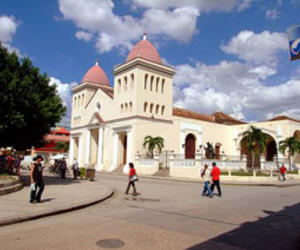A city of parks... and bridges
- Submitted by: manso
- Travel and Tourism
- 05 / 30 / 2011

2011.05.30 - 08:55:11 / radiorebelde.icrt.cu / Holguín, Cuba. - One of the largest Cuban cities, Holguin, was born in the valley between Jigüe and Marañón Rivers, to the north east of the Island. It lies at the foot of La Cruz Hill, which was named like this because a huge wooden cross had been planted at its summit a few years before.
Going in or out of the tiny population settlement soon required building plenty of bridges on the many local rivers. Those bridges and about 300 pedestrian crossings allow for the transportation of goods and other cargo. These crossings remain usefully operational in spite of their old age. Of course, these small bridges, built of wood, steel, concrete and combinations of these materials, required before and demand now thoroughly specialized and systematic maintenance. Otherwise, they would not exist.
This year, for instance, Holguin City government allocated about one million pesos, through several state organizations, to repair and maintenance works in 12 of these crossings. Such priority was attached to three approach roads to the well-known Lenin Hospital, one of the leading medical centers in Cuba.
However, Holguin City has grown beyond Jigüe and Marañon Rivers. Other developments merged with the former tiny settlement and today's city has reached other rivers. Therefore, some bridges to the east of the city are undergoing maintenance works too. They connect New Holguin to Pedro Diaz Coello and Las Delicias Quarters, in Cuaba, and the densely populated 26 de Julio to Pueblo Nuevo.
Remarkable progress in these works guarantees that they will be duly operational before the imminent beginning of the eagerly awaited rainy season in the current May.
About half a million Cubans live in the city of Holguin at the moment. In addition, a few thousands from other provinces and countries daily commute to the industries, hospitals and service centers based in this town. By: Aroldo Garcia
Translation: Pedro A. Fanego Sea
Comments